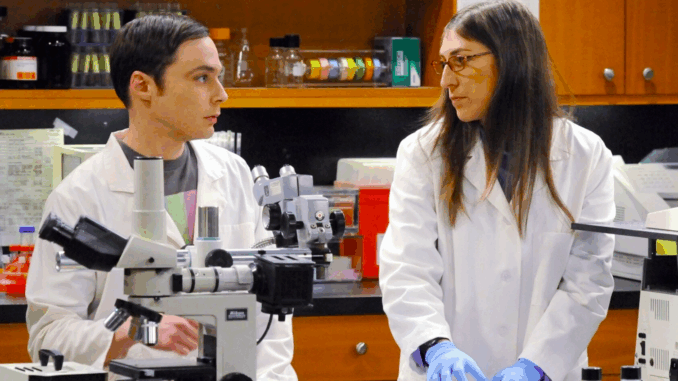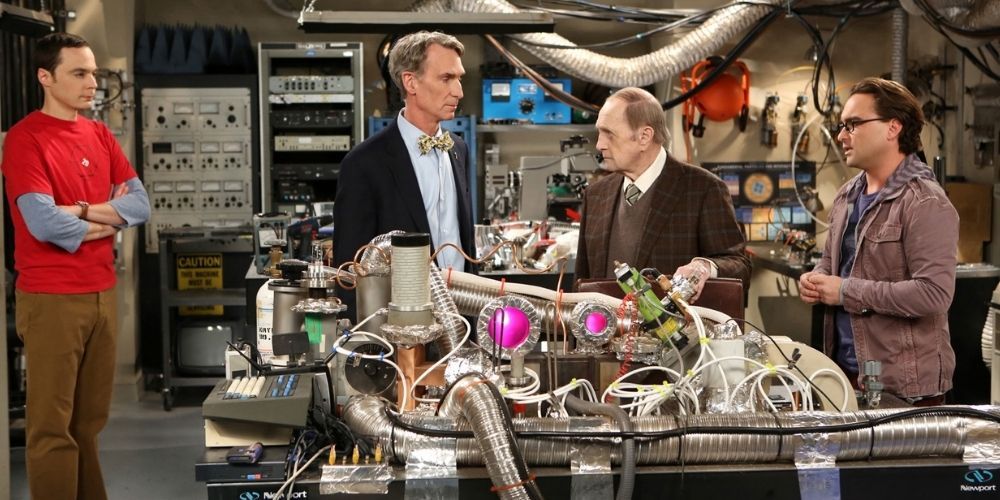
At first glance, The Big Bang Theory might seem like just another sitcom built on quirky characters and situational comedy. But beneath the surface-level punchlines and apartment hijinks lies a rare achievement in television: a show that treated science not just as window dressing, but as an integral part of its DNA.
That authenticity didn’t happen by accident. It was the result of a deliberate, behind-the-scenes collaboration with real scientists—most notably Dr. David Saltzberg, a UCLA physics professor who served as the show’s scientific consultant for all twelve seasons.
In an industry where “technobabble” often reigns, The Big Bang Theory took a different route—and helped change the public perception of science in the process.
The Scientist Behind the Scenes
Dr. David Saltzberg wasn’t a Hollywood writer. He was (and still is) a practicing experimental physicist with a deep knowledge of particle physics and radio astronomy. But when co-creator Bill Prady—himself a former computer programmer—realized he needed help making the show’s science accurate, he turned to Saltzberg.
Saltzberg’s job was simple but critical: make sure the science in every episode was correct. From whiteboard equations to astrophysics terminology, everything viewers saw had to pass his test. Each week, writers sent him scripts, and he reviewed them for scientific plausibility and accuracy.
Sometimes that meant adjusting a word or two. Other times, it meant suggesting entirely different experiments or references—ones that were cutting-edge, funny, and real.
He even helped design Sheldon and Leonard’s apartment whiteboards, which became minor stars of their own, often featuring equations and puzzles related to the episode’s plot.
Humor That Respected Science
While The Big Bang Theory was never a science documentary, it treated scientific concepts with a rare degree of seriousness—at least for a sitcom. Instead of dumbing things down, the writers leaned into the brilliance of their characters and the complexity of their work.
And surprisingly, that became a strength.
From discussions about the Higgs boson and string theory to squabbles over Nobel prizes and the Large Hadron Collider, science became part of the comedic rhythm. Viewers weren’t expected to understand every term—but they were invited to appreciate that the jokes were built on real foundations.
That subtle authenticity gave the show credibility—and won it admiration from academics and scientists around the world.
A New Kind of Pop Culture Influence
Most science-focused TV shows rely on drama (CSI, House, Fringe). But The Big Bang Theory took a lighter approach—and in doing so, made STEM (science, technology, engineering, and mathematics) cool.
By showcasing scientists as complex, funny, socially awkward, and—yes—romantically engaged human beings, the series helped challenge the long-standing stereotypes of “the nerd.”
More than that, it made young people curious. Teachers reported students referencing The Big Bang Theory in class. Universities saw bumps in physics enrollment. Science museums used clips from the show to illustrate real concepts.
The cultural footprint extended even further: real physicists and astronauts made guest appearances. Nobel Prize-winning astrophysicist Kip Thorne, Stephen Hawking, and Bill Nye the Science Guy all showed up—not just as cameos, but as part of the fabric of the show.
In one memorable episode, Sheldon receives a letter from Hawking—and nearly passes out. The moment was scripted, but the reverence was real.

The Fine Art of the Whiteboard
One of the show’s quietest achievements was turning scientific whiteboards into visual Easter eggs. Every time a character entered the apartment, a chalkboard full of equations sat behind them—complex, often real, and usually connected to current physics topics.
Dr. Saltzberg didn’t just scribble formulas at random. He used the boards to subtly reflect what the characters were researching, or what themes were being explored in that episode. In fact, physicists around the world would pause scenes and zoom in to study the math.
This level of detail became a kind of secret handshake between the show and the scientific community.
Laughing With, Not At
What set The Big Bang Theory apart was its willingness to laugh with scientists, not at them. Yes, the characters were socially awkward, and yes, they often struggled with basic communication. But they were also brilliant, passionate, and deeply committed to their work.
Their triumphs and failures were rooted in real-world science—and that made them relatable, even admirable.
When Sheldon obsessed over a theoretical model for weeks, only to find a tiny miscalculation had ruined it all—scientists laughed knowingly. When the group debated string theory versus loop quantum gravity, actual physicists nodded along, shocked to hear their daily dilemmas discussed on prime time.
The Legacy of Scientific Comedy
By the time The Big Bang Theory ended in 2019, it had become more than just a ratings juggernaut. It was one of the only sitcoms in history that regularly name-dropped actual scientists, discussed real experiments, and treated intellectual passion as something worthy of screen time.
Its impact still lingers. Young Sheldon continues the tradition, and many fans of the show have gone on to pursue careers in science, citing the series as part of their inspiration.
Dr. Saltzberg, for his part, has returned to full-time research—but he often reflects on his time with the show as a once-in-a-lifetime opportunity to bridge two worlds that rarely speak to one another: science and entertainment.
Conclusion: Laugh Tracks and Lab Coats
The Big Bang Theory proved that you don’t have to sacrifice intelligence for comedy—and that audiences will follow you, even into the wild terrain of quantum physics, if you tell the story with heart and respect.
By putting real science into a fictional world, and making that science funny, human, and emotionally rich, the show carved out a space that still feels singular in the TV landscape.
And somewhere, on a chalkboard in Pasadena, those equations are still making people smile.
